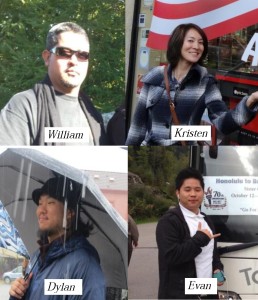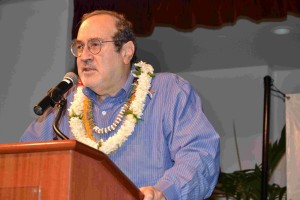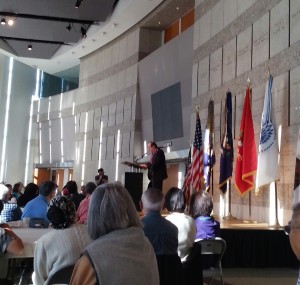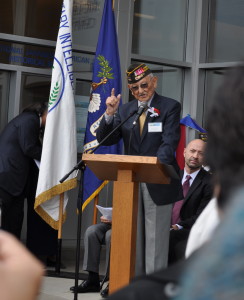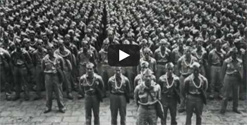Author Archives: Chris Green
?> ?>522nd Field Artillery Battalion
?> ?> ?>CAMP ‘US, FRANCE
?> ?>
The Bruyeres, Vallons des Vosges Community of Communes
The Bruyeres Vallons des Vosges Office of tourisme
and the Peace and Freedom Trail Association- Go for Broke French Club
are delighted to present to you a new website dedicated to the Camp’US project:
?> ?>
The National Order of the Legion of Honor
?> ?>
January 14, 15, 16, 2015 – Hawaii
France honors veterans of the 100th Infantry Battalion and 442nd RCT in three separate ceremonies held on the Big Island, Maui and Oahu. Some 57 veterans received the French Legion of Honor decree, the highest decoration bestowed by France, in recognition of those who risked their lives during World War II to liberate France.
?> ?>Under the Blood Red Sun
?> ?>To commemorate December 7th 1941, there will be 5 Limited Engagement Screenings of the movie “Under the Blood Red Sun” screenplay & book by Graham Salisbury: the story of Tomi, a Japanese American boy and his family, living in Hawaii, during the attack on Pearl Harbor. The movie centers around the racial persecution of Tomi’s family and others at the beginning of the war.
Screening Dates & Times:
- December 7, 2014: 4:00 & 7:00 PM
- December 12, 2014: 7:00 PM
- December 14, 2014: 4:00 & 7:00 PM
Place: Mid-Pacific Institute, Bakken Auditorium (2445 Kaala St, Honolulu, HI)
Cost: $10
Go For Broke Bulletin June 2014
?> ?>
The Go For Broke Bulletin is a quarterly publication of the 442nd Veterans Club. Here is the latest publication: Volume 66, No. 3, April – June 2014.
Click here to view GFB Bulletin-June 2014
?> ?>
The Generals Messenger
?> ?>THE GENERAL’S MESSENGER
Written by June Morimatsu
Daughter of 442nd RCT veteran, Ralph Tomei of M Company
We graduated from Farrington High School in 1971, during the era of the war in Vietnam. For some of the boys in our graduating class the future held the very real prospect of being drafted into the military.
When my friend, Milton Kaneshiro, was faced with the dilemma of a low lottery number and waiting for the inevitable draft notice, or, enlisting and choosing where he would be stationed, Milton chose to enlist and was guaranteed eighteen months at the Army base in Stuttgart, Germany. As the center for the European high command, Stuttgart Army Base had more than twenty generals.
Now, this 20 year old Kalihi boy was by no means a model soldier. By Milton’s own admission, he was a “rebel” in uniform and for that reason he wasn’t well-liked by his superiors. One of the sticking points was Milton’s refusal to take down a sign he posted at the entrance to the barracks he shared with three other soldiers. The sign read: “Please Remove Footwear Before Entering”
The roommate sharing half of the barracks with Milton complied with the sign, but Milton’s other two roommates and his superiors simply ignored it and labeled him a “troublemaker”. Although Milton’s superiors kept chiding him to take his sign down, he held his ground, saying that they were going to do whatever they wanted to do, regardless of the sign; he was only asking that they respect his Japanese culture; and, if they wanted it taken down, they would have to take it down themselves. For some reason no one bothered to take the sign down, and so it remained posted.
?> ?>71st Anniversary Banquet
?> ?> The 442nd’s 71st Anniversary Banquet was held on Sunday, March 23, 2014 at the Pomaika’i Ballrooms at Dole Cannery – Iwilei, Honolulu. The theme of the event was “We Will Never Forget” as an affirmation that the legacy of the 442nd RCT will live on. The program featured a keynote speech delivered by Eric Saul, Military Historian and Curator. Here are photos taken of the event, compliments of Ann Kabasawa, Clyde Sugimoto, Pat Thompson, Wayne Iha, Lowell Tom, Hal Ing, Terry Takaki, and Stan Oka. Click below to open. Read more »
The 442nd’s 71st Anniversary Banquet was held on Sunday, March 23, 2014 at the Pomaika’i Ballrooms at Dole Cannery – Iwilei, Honolulu. The theme of the event was “We Will Never Forget” as an affirmation that the legacy of the 442nd RCT will live on. The program featured a keynote speech delivered by Eric Saul, Military Historian and Curator. Here are photos taken of the event, compliments of Ann Kabasawa, Clyde Sugimoto, Pat Thompson, Wayne Iha, Lowell Tom, Hal Ing, Terry Takaki, and Stan Oka. Click below to open. Read more »
Go For Broke Bulletin – March 2014
?> ?>
The Go For Broke Bulletin is a quarterly publication of the 442nd Veterans Club. Here is the latest publication: Volume 66, No. 2, January – March 2014.
Click to view GFB Bulletin-March 2014
?> ?>
Nisei Soldiers — Through Their Grandchildren’s Eyes
?> ?>Honolulu – May 16, 2014. The following article was printed in The Hawaii Herald – Hawaii’s Japanese American Journal (Vol. 35. No. 10).
THE NISEI SOLDIERS — THROUGH THEIR GRANDCHILDREN’S EYES
Yonsei’s Pilgrimage to Their Grandfathers’ Battlegrounds Stirs a Sense of Legacy
Editor’s note: The following is an edited transcript of a “talk story” session among four yonsei whose grandfathers served in the 442nd Regimental Combat Team in World War II. Last October, they joined their parents on a pilgrimage to Europe, where, among other sites, they visited the former Dachau concentration camp in southern Germany, and Bruyeres, France.
Almost 70 years ago, Nisei soldiers from the 442nd RCT had helped to liberate Nazi-held prisoners at Dachau and to free the small town of Bruyeres in the Vosges Mountains of northeastern Frances from Nazi control. The Vosges campaign, which included the now-famous rescue of the Texas “Lost Battalion,” was a costly one for the 442nd — 161 AJA soldiers lost their lives and 925 were wounded, injured or declared missing in action.
Hawai‘i Herald advertising manager Karlton Tomomitsu, whose late father served with the 442nd, had hoped to join the tour, but was unable to, so he met with these four yonsei recently (there were nearly a dozen) to hear their impressions of the trip. With their permission, he recorded their conversation. I edited the transcript, extracting the most poignant impressions of these four young people.
Kristen Nemoto and William Holck, both 29, are cousins, and grandchildren of Wilbert “Sandy” Holck, who was a hapa member of the 442nd. Sandy Holck, a former Honolulu City Council member, played a pivotal role in establishing Honolulu’s sister-city relationship with Bruyeres in 1961. Kristen, who earned her master’s in journalism from DePaul University, is a writer for a travel magazine. Cousin William graduated from Castle High School and the Conservatory of Recording Arts and Sciences in Phoenix, Ariz., and is a utility assistant for Hawaiian Electric Company.
Dylan Yamashita, 30, and his brother Evan, 28, are the grandsons of Victor Isao Yamashita. They traveled to Europe with their father, Byrnes Yamashita. Dylan graduated from the University of Washington and is a landscape designer. Evan is a UH graduate with degrees in Japanese language and business (Travel Industry Management). He works as guest services manager for The Royal Hawaiian Resort.
Our thanks to Kristen, William, Dylan and Evan for allowing us to share their perspectives with our readers.
WILLIAM: [My] expectations weren’t too great. I didn’t know too much about 442nd. It was a trip to go to Europe for me. Being there changed my view of everything, what they did, the places they went to, the things they had to endure while they were there . . . . I learned a lot about what my grandfather did and the impact that it had on World War II and Japanese Americans, not only in Hawai‘i, but on the Mainland, as well — how they had to go to concentration camps. Things like that we would never know if we didn’t take interest in it.
To go and see all the memorial sites, the graveyards, all the places where they fought . . . We experienced some cold weather, but I heard that it was worse when they were actually there fighting. We had our last parade in Bruyeres — we walked through; it was rainy and cold, at least for us guys from Hawai‘i. They said it was nothing compared to what it was like when they fought at Bruyeres [in October/November 1944].
Epinal, that was the biggest thing for me. That was the eye-opener. Going and seeing the graves, and they had all those names on the wall of the people they didn’t get to bury because they were missing. There were thousands of names. That hit really close. It was a very emotional part. Seeing the names of soldiers that went missing or were never heard from again. Thousands of names and graves. The curator was nice enough to point out which one of them were 442nd graves. There were a bunch of them.
KRISTEN: Like William, I had an idea of the 442nd and I had an idea of what our grandpa had done. We had heard stories growing up, but it was nothing compared to actually being there among the people, actually being in the woods, exactly where they fought; down below, where the town was being taken over. Just seeing that — it was very surreal. You feel so much more connected and humbled to your past. For me, it was extremely eye-opening.
WILLIAM: We were actually stepping on the grounds that they walked.
?> ?>Saul’s 71st Anniversary Speech
?> ?>Honolulu, Hawaii – March 23, 2014. The 442nd Veterans Club held their 71st Anniversary Banquet in honor of the formation of their Unit. Over 600 veterans, family members and guests attended this memorable event, which was filled with lots of speeches and entertainment. Military historian and curator, Eric Saul delivered the keynote speech. Here is a copy of his inspiring speech:
Go For Broke: Japanese American Soldiers Fighting on Two Fronts
Speech for 442nd RCT 71st Anniversary Reunion
Honolulu, Hawai’i, March 23, 2014
By Eric Saul
“I think we all felt that we had an obligation to do the best we could and make a good record. So that when we came back we can come back with our heads high and say, ‘Look, we did as much as anybody else for this country and we proved our loyalty; and now we would like to take our place in the community just like anybody else and not as a segregated group of people.’ And I think it worked.”
– Nisei solder, Camp Shelby, Mississippi
“Hawaii is our home; the United States our country… We know but one loyalty and that is to the Stars and Stripes.”
– Nisei solder, volunteering for the U.S. Army
Who were you? First of all, you were Americans. You happened to be of Japanese ancestry. You were called Nisei. You were second generation, born in the United States. Most were born in the 1920s.
Where were you from? You were from Hawaii, Oahu, Maui, Kauai, Big Island. You were also from California, Oregon and Washington. You grew up in cities like Honolulu, Los Angeles, Portland, Seattle, Sacramento, Fresno, and San Jose. You grew up in neighborhoods like Boyle Heights, the Palama District, and others. You lived in hundreds of small farming towns in the Western United States. You lived in the Little Tokyo’s and Japantown’s of the big cities on the West Coast. Here in Hawaii, you grew up on plantations with funny-sounding names like Hanapepe, Pu’unene and Lihue, where you toiled in the hot sun, helping your parents to harvest and process the sugar cane and pineapples.
You went to schools like McKinley, Garfield, and Roosevelt High School, named after great presidents.
You were raised to be Americans. As American as apple pie and hot dogs. You studied the Constitution, the Bill of Rights, and American history. Every day, you pledged allegiance to the flag. You learned and were taught that you could aspire to anything that you dreamed. You were proud to call yourselves Americans. And you were proud to call yourselves Americans of Japanese Ancestry.
After school, you most often reluctantly attended Japanese language school. You resented having to sit in a classroom rather than playing baseball, football or basketball.
The Japanese attack on Pearl Harbor was a brutal blow. You were soon reminded that your faces were not like other Americans—you had the face of the enemy and all that it represented, but truly you had the heart of an American.
?> ?>Go For Broke Bulletin – December 2013
?> ?>The Go For Broke Bulletin is a quarterly publication of the 442nd Veterans Club. Here is the latest publication: Volume 66, No. 1, October – December 2013. Click on link below:
?> ?>Go For Broke Bulletin – September 2013
?> ?>The Go For Broke Bulletin is a quarterly publication of the 442nd Veterans Club. Here is the latest publication: Volume 65, No. 4, July – September 2013.
?> ?>Scott Fujita of the NFL visits the GFB Monument
?> ?>Los Angeles – November 25, 2013. Scott Fujita, recently retired from the National Football League, after playing 11 seasons with the Kansas City Chiefs, The New Orleans Saints, the Dallas Cowboys and the Cleveland Browns. He is the adopted son of Rodney and Helen Fujita of California. His grandfather, Nagao Fujita, was a member of the 442nd RCT.
Scott was at the Go For Broke Monument where a Japanese TV station was doing a story about him. Also there were veterans Hiro Nishikubo and Don Seki, Tracey Matsuyama, Dickie Wilson and Takanori Nishi.
?> ?>Go For Broke Exhibit at JANM
?> ?>Los Angeles – November 10, 2013. The Japanese American Museum in Los Angeles celebrated to opening of a new exhibit entitled, “Go For Broke: Japanese American Soldiers Fighting on Two Fronts.” The exhibit is part of an extensive collection held by writer and military historian, Eric Saul.
Saul was present at the ceremony and delivered the following speech:
Go For Broke:
Japanese American Soldiers Fighting on Two Fronts
I think we all felt that we had an obligation to do the best we could and make a good record. So that when we came back we can come back with our heads high and say, ‘Look, we did as much as anybody else for this country and we proved our loyalty; and now we would like to take our place in the community just like anybody else and not as a segregated group of people.’ And I think it worked.
– Nisei solder, Camp Shelby, Mississippi
Hawaii is our home; the United States our country… We know but one loyalty and that is to the Stars and Stripes.
We are gathered here today to talk about a group of men. Men who fought for their country and for their community. They were fighting two wars: a war against prejudice and racism at home and a war to literally save the world from tyranny. It has now been more than 70 years since the first Nisei committed themselves to the fight for democracy.
Many of these Nisei have passed from this world and are no longer here with us to tell us their story. Some of you Nisei are in the audience today, and I will be addressing my remarks today to you.
You were among the 1,550 brave young men who, in the words of President Harry S. Truman, “fought not only the enemy, but fought prejudice, and won.”
Who were you? First of all, you were Americans. You happened to be of Japanese Ancestry. You were called Nisei. You were second generation, born in the United States. Most were born in the 1920s.
Where were you from? You were from Hawaii, Ohau, Maui, Kawai. You were also from California, Oregon and Washington. You grew up on Honolulu, Los Angeles, Boyle Heights, the Paloma District, Fresno, Seattle, Portland and in hundreds of small farming towns in the Western United States. You lived in the Little Tokyos and Nihonmachis of the big cities on the West Coast. In Hawaii, you grew up on plantations, where you toiled in the hot sun, helping to harvest and process the sugar cane.
?> ?>Opening Day at Building 640
?> ?>San Francisco- November 11, 2013. The MIS Historic Learning Center held its opening day ceremonies after 25 years in the making. It began operations as the first MIS language school in 1941, a month before the bombing of Pearl Harbor. Many dignitaries, veterans, and family members attended the ceremony.
Maj. Gen. Arthur Ishimoto (Ret), a MIS veteran, delivered the following keynote speech:
Building 640, The Presidio, San Francisco, California
I was a member of the Military Intelligence Service during World War II. This building has a connection to all of us who served in the MIS. We began our long journey from here to prove we’re Americans.
But first, let me remind you of our shameful and ugly history so that you can fully understand why so much blood was spilled by my generation.
Our lives changed dramatically on December 7, 1941.
We nisei were suspected of being disloyal and were classified as “enemy aliens” (4-C). With one stroke of a pen, 70,000 nisei lost their citizenship. One hundred and twelve thousand Japanese residents from the West Coast were sent to internment camps. From April 1942 to October 1943, 17,000 so-called “enemy aliens” lived in the stables at Santa Ana racetrack under deplorable condition.
In 1943, we were allowed to enlist in the Army. Even while in the Army, we were called Japs. When we returned home from the battlefields with Purple Hearts, we were met with signs that read, “No Japs allowed”. We were refused service at barber shops, restaurants and other places.
We looked like the enemy, but we were Americans at heart. What price is freedom, we wondered?
Most internees accepted their confinement, surrendered and said, “Shikata ga nai,” meaning “it can’t be helped, there is nothing we can do”. Oh yes, we did. More than 33,000 of us served in the military during World War II.. That was more than 13 percent of the total Japanese population in the U.S. and greater than the national average.
In Japanese culture, there were values we depended on. Gaman is one. It means “endure, tolerate, persevere”. My judo sensei yelled in the dojo many times, “Ganbare” — “don’t give up, hang in there.”
We suffered racial adversity since that December day. We had to gaman and ganbare. These two values were our guiding principle that navigated us through a sea of racial prejudice, hatred and distrust.
?> ?>










